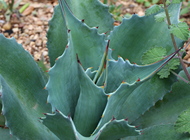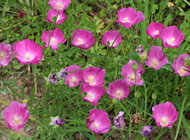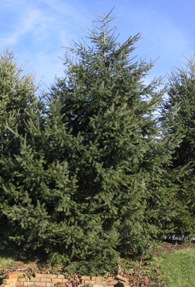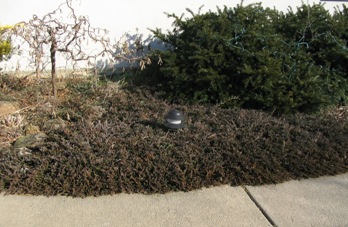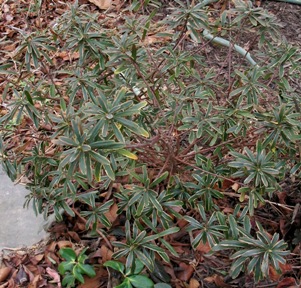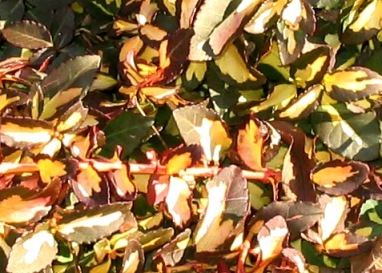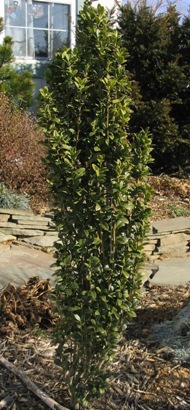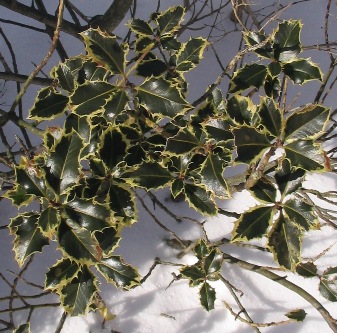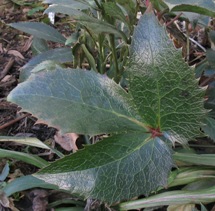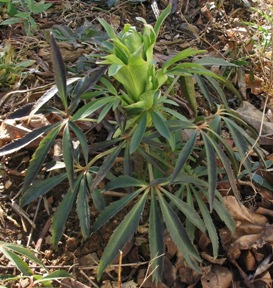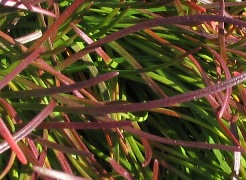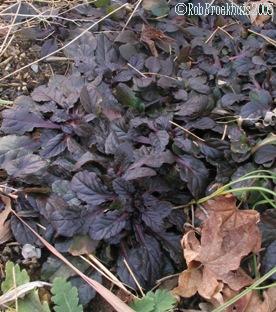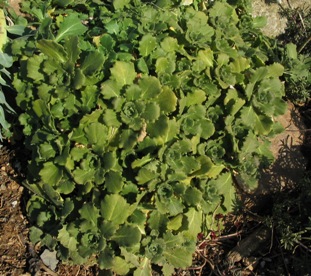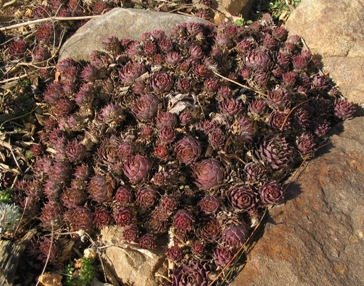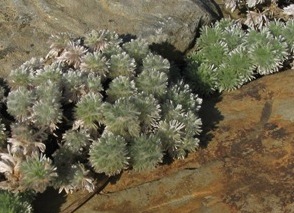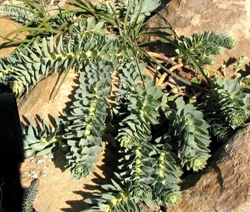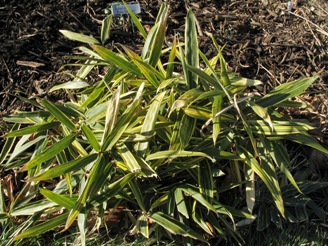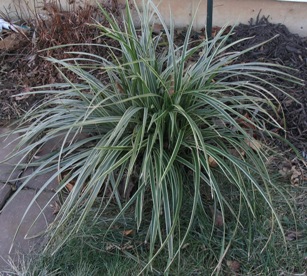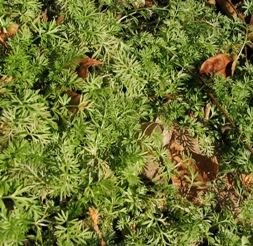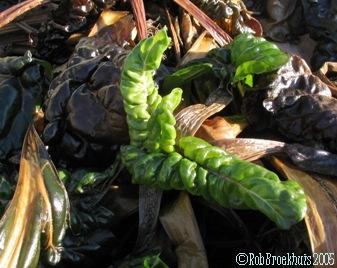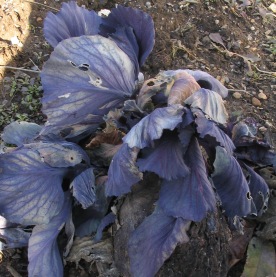Evergreen - the word conjures up a picture of a Christmas tree. In a garden context, we picture that same Christmas tree, or one of its coniferous cousins, beaming green in a snow-covered landscape. But in the winter garden, evergreen is more than just coniferous trees: broadleaf shrubs, perennials, even hardy annuals and vegetables also count. I'm putting together this page to explore just how different kinds of evergreens figure in the garden scene. Let's define what I mean by evergreen here. I'm not a botanist, so my definition may not be the official one - but it will suffice here. To me, an evergreen is any plant that maintains live leaves through part or all of winter. Just winter color doesn't count. Nice bark doesn't count. Buds don't count. It's gotta be leaves. As part of this project, I walked through my garden on January 1, 2005 and took pictures of lots of plants showing leaves that hadn't given up. Some barely hanging in there, others as vigorous as ever. By that date, we'd had two nights down to 2°F, but only a little bit of snow. I plan to do another walk-through in a few weeks to compare results. ConifersLet's start with the most familiar cast of evergreen characters - coniferous trees and shrubs. Most of the clan are, in fact, evergreen, although there are a few deciduous conifers as well, for example the dawn redwood.
Other conifers are mainly in our front yard and garden. We have two types of yew planted along the foundation (no, not very original - but at least we don't clip them). Also a skyrocket juniper and its unidentified cousin, a few Alberta spruces (still small after years in our garden), a Bosnian pine, and some sort of false cypress. Separating our side garden from the neighbors' driveway is a hedge of arborvitae. Even though we never water or fertilize them, they seem to do better than most of our neighbors' arbs. Go figure.
Other conifers are the dwarf ones, small in all directions - mugho pines, dwarf hinoki cypress and false cypress. Photos of those will follow in the next series... Broad-leaved evergreen shrubsThe second category of evergreens gardeners usually think of is broadleaf
evergreen shrubs. For reasons unknown, all rhododendrons and most azaleas
we've tried in our garden have failed, but we do have some hollies and others.
A few portraits from January 2005 are shown below.
PerennialsMany herbaceous perennials also keep some of their foliage through winter.
Some just barely hang on, while others shine. Let's start with the latter first. HelleboresHellebores really are the aristocrats of the winter perennial garden. Most of the ones we grow never skip a beat, looking as good or better in January as they did in the warmer seasons. Of course, they follow up this act with early-season flowers, some while snow still covers the ground, but that's not the focus of this article.
Taking on new colorsWhile we use the term evergreen, that doesn't mean the foliage is necessarily verdant. In fact, some of the most striking perennials in the winter garden take on different tones. Some carry these other colors throughout the season, while others reserve them for freezy times.
Rock garden plantsMany alpine and other low-growing plants keep their posture, small as it may be, better than their taller cousins.
Grasses and suchMany grass-like plants stay perky through winter.
Annuals
VegetablesI wouldn't call our vegetable garden a lush zone in wintertime, but some
vegetables, if left to their own devices, will continue to show life into
winter.
Visitors to this page have left the following comments
I welcome comments about my web pages; feel free to use the form below to leave feedback about this particular page. For the benefit of other visitors to these pages, I will list any relevant comments you leave, and if appropriate, I will update my page to correct mis-information. Note that I discard any comments including html markups, so please submit your comment as plain text. If you have a comment about the website as a whole, please leave it in my guestbook. If you have a question that needs a personal response, please e-mail me. | |||||||||||||||||||||||||||||||||||||||||||||||||||||||
